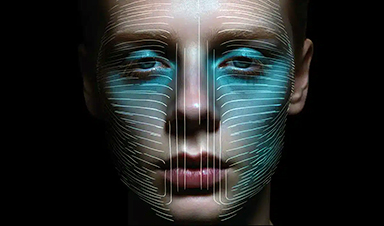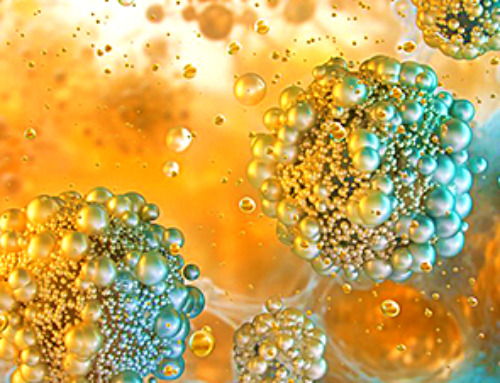Summary: A new study reveals that people who are blind can recognize faces using auditory patterns processed by the fusiform face area, a brain region crucial for face processing in sighted individuals.
The study employed a sensory substitution device to translate images into sound, demonstrating that face recognition in the brain isn’t solely dependent on visual experience. Blind and sighted participants underwent functional MRI scans, showing that the fusiform face area encodes the concept of a face, irrespective of the sensory input.
This discovery challenges the understanding of how facial recognition develops and functions in the brain.
Key Facts:
- The study shows that the fusiform face area in the brain can process the concept of a face through auditory patterns, not just visually.
- Functional MRI scans revealed that this area is active in both blind and sighted individuals during face recognition tasks.
- The research utilized a specialized device to translate visual information into sound, enabling blind participants to recognize basic facial configurations.
Source: Georgetown University Medical Center
Using a specialized device that translates images into sound, Georgetown University Medical Center neuroscientists and colleagues showed that people who are blind recognized basic faces using the part of the brain known as the fusiform face area, a region that is crucial for the processing of faces in sighted people.
The findings appeared in PLOS ONE on November 22, 2023.
“It’s been known for some time that people who are blind can compensate for their loss of vision, to a certain extent, by using their other senses,” says Josef Rauschecker, Ph.D., D.Sc., professor in the Department of Neuroscience at Georgetown University and senior author of this study.
“Our study tested the extent to which this plasticity, or compensation, between seeing and hearing exists by encoding basic visual patterns into auditory patterns with the aid of a technical device we refer to as a sensory substitution device. With the use of functional magnetic resonance imaging (fMRI), we can determine where in the brain this compensatory plasticity is taking place.”
Face perception in humans and nonhuman primates is accomplished by a patchwork of specialized cortical regions. How these regions develop has remained controversial. Due to their importance for social behavior, many researchers believe that the neural mechanisms for face recognition are innate in primates or depend on early visual experience with faces.
“Our results from people who are blind implies that fusiform face area development does not depend on experience with actual visual faces but on exposure to the geometry of facial configurations, which can be conveyed by other sensory modalities,” Rauschecker adds.
Paula Plaza, Ph.D., one of the lead authors of the study, who is now at Universidad Andres Bello, Chile, says, “Our study demonstrates that the fusiform face area encodes the ‘concept’ of a face regardless of input channel, or the visual experience, which is an important discovery.”
Six people who are blind and 10 sighted people, who served as control subjects, went through three rounds of functional MRI scans to see what parts of the brain were being activated during the translations from image into sound.
The scientists found that brain activation by sound in people who are blind was found primarily in the left fusiform face area while face processing in sighted people occurred mostly in the right fusiform face area.
“We believe the left/right difference between people who are and aren’t blind may have to do with how the left and right sides of the fusiform area processes faces – either as connected patterns or as separate parts, which may be an important clue in helping us refine our sensory substitution device,” says Rauschecker, who is also co-director of the Center for Neuroengineering at Georgetown University.
Currently, with their device, people who are blind can recognize a basic ‘cartoon’ face (such as an emoji happy face) when it is transcribed into sound patterns. Recognizing faces via sounds was a time-intensive process that took many practice sessions.
Each session started with getting people to recognize simple geometrical shapes, such as horizontal and vertical lines; complexity of the stimuli was then gradually increased, so the lines formed shapes, such as houses or faces, which then became even more complex (tall versus wide houses and happy faces versus sad faces).
Ultimately, the scientists would like to use pictures of real faces and houses in combination with their device, but the researchers note that they would first have to greatly increase the resolution of the device.
“We would love to be able to find out whether it is possible for people who are blind to learn to recognize individuals from their pictures. This may need a lot more practice with our device but now that we’ve pinpointed the region of the brain where the translation is taking place, we may have a better handle on how to fine-tune our processes,” Rauschecker concludes.
In addition to Rauschecker, the other authors at Georgetown University are Laurent Renier and Stephanie Rosemann. Anne G. De Volder, who passed away while this manuscript was in preparation, was at the Neural Rehabilitation Laboratory, Institute of Neuroscience, Université Catholique de Louvain, Brussels, Belgium.
Funding: This work was supported by a grant from the National Eye Institute (#R01 EY018923).
The authors declare no personal financial interests related to the study.
News
Scientists Melt Cancer’s Hidden “Power Hubs” and Stop Tumor Growth
Researchers discovered that in a rare kidney cancer, RNA builds droplet-like hubs that act as growth control centers inside tumor cells. By engineering a molecular switch to dissolve these hubs, they were able to halt cancer [...]
Platelet-inspired nanoparticles could improve treatment of inflammatory diseases
Scientists have developed platelet-inspired nanoparticles that deliver anti-inflammatory drugs directly to brain-computer interface implants, doubling their effectiveness. Scientists have found a way to improve the performance of brain-computer interface (BCI) electrodes by delivering anti-inflammatory drugs directly [...]
After 150 years, a new chapter in cancer therapy is finally beginning
For decades, researchers have been looking for ways to destroy cancer cells in a targeted manner without further weakening the body. But for many patients whose immune system is severely impaired by chemotherapy or radiation, [...]
Older chemical libraries show promise for fighting resistant strains of COVID-19 virus
SARS‑CoV‑2, the virus that causes COVID-19, continues to mutate, with some newer strains becoming less responsive to current antiviral treatments like Paxlovid. Now, University of California San Diego scientists and an international team of [...]
Lower doses of immunotherapy for skin cancer give better results, study suggests
According to a new study, lower doses of approved immunotherapy for malignant melanoma can give better results against tumors, while reducing side effects. This is reported by researchers at Karolinska Institutet in the Journal of the National [...]
Researchers highlight five pathways through which microplastics can harm the brain
Microplastics could be fueling neurodegenerative diseases like Alzheimer's and Parkinson's, with a new study highlighting five ways microplastics can trigger inflammation and damage in the brain. More than 57 million people live with dementia, [...]
Tiny Metal Nanodots Obliterate Cancer Cells While Largely Sparing Healthy Tissue
Scientists have developed tiny metal-oxide particles that push cancer cells past their stress limits while sparing healthy tissue. An international team led by RMIT University has developed tiny particles called nanodots, crafted from a metallic compound, [...]
Gold Nanoclusters Could Supercharge Quantum Computers
Researchers found that gold “super atoms” can behave like the atoms in top-tier quantum systems—only far easier to scale. These tiny clusters can be customized at the molecular level, offering a powerful, tunable foundation [...]
A single shot of HPV vaccine may be enough to fight cervical cancer, study finds
WASHINGTON -- A single HPV vaccination appears just as effective as two doses at preventing the viral infection that causes cervical cancer, researchers reported Wednesday. HPV, or human papillomavirus, is very common and spread [...]
New technique overcomes technological barrier in 3D brain imaging
Scientists at the Swiss Light Source SLS have succeeded in mapping a piece of brain tissue in 3D at unprecedented resolution using X-rays, non-destructively. The breakthrough overcomes a long-standing technological barrier that had limited [...]
Scientists Uncover Hidden Blood Pattern in Long COVID
Researchers found persistent microclot and NET structures in Long COVID blood that may explain long-lasting symptoms. Researchers examining Long COVID have identified a structural connection between circulating microclots and neutrophil extracellular traps (NETs). The [...]
This Cellular Trick Helps Cancer Spread, but Could Also Stop It
Groups of normal cbiells can sense far into their surroundings, helping explain cancer cell migration. Understanding this ability could lead to new ways to limit tumor spread. The tale of the princess and the [...]
New mRNA therapy targets drug-resistant pneumonia
Bacteria that multiply on surfaces are a major headache in health care when they gain a foothold on, for example, implants or in catheters. Researchers at Chalmers University of Technology in Sweden have found [...]
Current Heart Health Guidelines Are Failing To Catch a Deadly Genetic Killer
New research reveals that standard screening misses most people with a common inherited cholesterol disorder. A Mayo Clinic study reports that current genetic screening guidelines overlook most people who have familial hypercholesterolemia, an inherited disorder that [...]
Scientists Identify the Evolutionary “Purpose” of Consciousness
Summary: Researchers at Ruhr University Bochum explore why consciousness evolved and why different species developed it in distinct ways. By comparing humans with birds, they show that complex awareness may arise through different neural architectures yet [...]
Novel mRNA therapy curbs antibiotic-resistant infections in preclinical lung models
Researchers at the Icahn School of Medicine at Mount Sinai and collaborators have reported early success with a novel mRNA-based therapy designed to combat antibiotic-resistant bacteria. The findings, published in Nature Biotechnology, show that in [...]





















